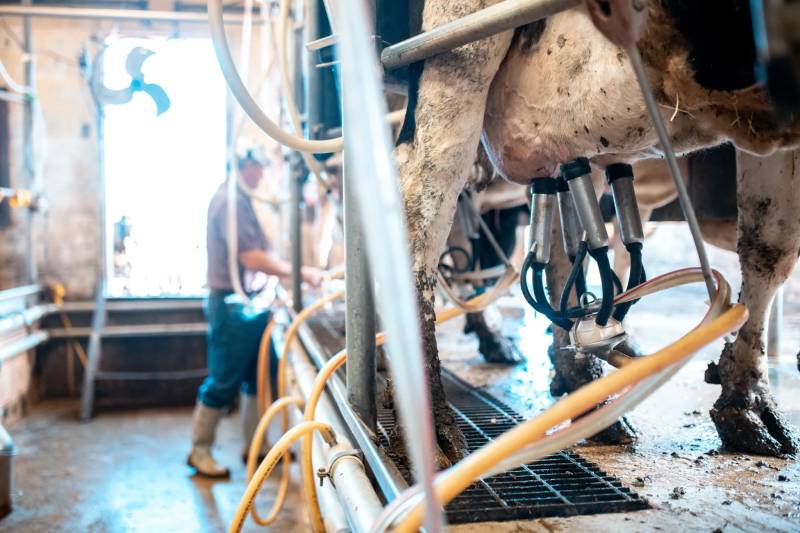But people generally get tested when they seek treatment for illnesses. Farmworkers rarely do that because many lack health insurance and paid sick leave, said Elizabeth Strater, director of strategic campaigns for the national group United Farm Workers. They are unlikely to go to a doctor unless they become very ill.
Strater said about 150,000 people work in U.S. dairies. She said many worker advocates believe the virus has spread to more people than tests are showing. “The method being used to surveil at-risk workers has been very passive,” she said.
Federal officials told reporters on May 22 that just 40 people connected to U.S. dairy farms had been tested for the virus, although others are being “actively monitored” for symptoms.
Federal authorities recently announced they would pay farmworkers $75 each to be tested for the virus as part of a new program offering incentives for farm owners to allow testing of their dairy herds.
Officials of the federal Centers for Disease Control and Prevention said they recognize the importance of gaining cooperation and trust from front-line dairy employees.
CDC spokesperson Rosa Norman said in an email that the incentive payment compensates workers for their time contributing to the monitoring of how many people are infected, how sick they become, and whether humans are spreading the virus to each other.
She noted the CDC believes the virus currently poses a low risk to public health.
But Strater is skeptical of the incentive for farmworkers to be checked for the virus. If a worker tests positive, they’d likely be instructed to go to a clinic and then stay home from work. She said they couldn’t afford to do either.
“That starts to sound like a really bad deal for 75 bucks because, at the end of the week, they’re supposed to feed their families,” she said.
Katherine Wells, director of public health in Lubbock, Texas, said that in her state, health officials would provide short-term medical care, such as giving farmworkers the flu treatment Tamiflu. Those arrangements wouldn’t necessarily cover hospitalization if it were needed, she said.
She said the workers’ bigger concern appears to be that they would have to stay home from work or might even lose their jobs if they tested positive.
Many farmworkers are from other countries, and they often labor in grueling conditions for little pay.
They may fear attention to cases among them will inflame anti-immigrant fervor, said Monica Schoch-Spana, a medical anthropologist at the Johns Hopkins Center for Health Security.
Societies have a long history of blaming marginalized communities for the spread of contagious diseases. Latino immigrants were verbally attacked during the H1N1 “swine flu” pandemic in 2009, for example, and some media personalities used the outbreak to push for a crackdown on immigration.
Bethany Boggess Alcauter, director of research and public health programs at the National Center for Farmworker Health, said many workers on dairy farms have been told very little about this new disease spreading in the cows they handle. “Education needs to be a part of testing efforts, with time for workers to ask questions,” she said.
These conversations should be conducted in the farmworkers’ language, with people they are likely to trust, she said.
Georges Benjamin, executive director of the American Public Health Association, said public health officials must make clear that workers’ immigration status will not be reported as part of the investigation into the new flu virus. “We’re not going to be the police,” he said.
Dawn O’Connell, an administrator at the Department of Health and Human Services, said in a press conference on May 22 that nearly 5 million doses of a vaccine against H5N1, the bird flu virus circulating in cattle, are being prepared. However, officials have not decided whether the shots will be offered to farmworkers when they’re ready later this year.

